Albert Friscia: in Potenza a twentieth-century artist to be rediscovered
A total of 96 paintings, 65 sculptures in bronze and marble, 10 kinetic works, 580 graphic works and drawings: this is the patrimony that constitutes the collection of works of art of the Italian-American painter and sculptor Albert Friscia (New York, 1911 - Rome, 1989) that arrived after his death at the National Library of Potenza, at the behest of his wife Lidia Di Bello, a native of the capital of Basilicata. It is a conspicuous collection to get to know an original artist, well inserted in the artistic and cultural circles of his time, but still struggling to make a name for himself with the general public, despite a successful career and despite the fact that his name figures among those of the major exponents ofkinetic art. Friscia was an isolated artist, however, who never exhibited in major international contexts (such as the Venice Biennials, for example), and after his arrival in Italy he remained a tendentially settled author, albeit in contact with many of the greats of his time. After his studies at the National Academy of Design in New York, at Black Mountain College (where he was a pupil of Josef Albers) and at the Academy de la Grande Chaumière in Paris, where he took courses from André Masson, Friscia settled, in 1950, in Italy, in Rome to be precise, where he was able to deepen his research on light and movement.
In fact, Friscia had already begun to work at a very young age, in his early twenties: this was the America of the 1930s, the America of the New Deal and the Public Works of Art Project (PWAP), the great public art plan subsidized by the federal government that, in the years of the Great Depression, and to be precise between 1933 and 1934, employed more than 3,700 artists who produced about 15,000 works of art, with which the public heritage of the United States was enriched. This was the climate in which Friscia was formed: although not working directly for PWAP, the artist, in 1937, had been commissioned to paint a number of murals at the New York County Court House: he was in fact distinguished for his socially themed paintings, which characterized the beginning of his career, although his interest in light and bold perspectives, which began to make its way into the paintings of the mid-1930s, is also very early. “Views from below upward, shatterings of the painted surface in a pointillist sense, and later, in 1945, sensitive deformations [...] converge to ’set in motion,’ according to an undulating rhythm, the entire pictorial field”: this is how scholar Bruno Mantura summarized the terms of Friscia’s early production.
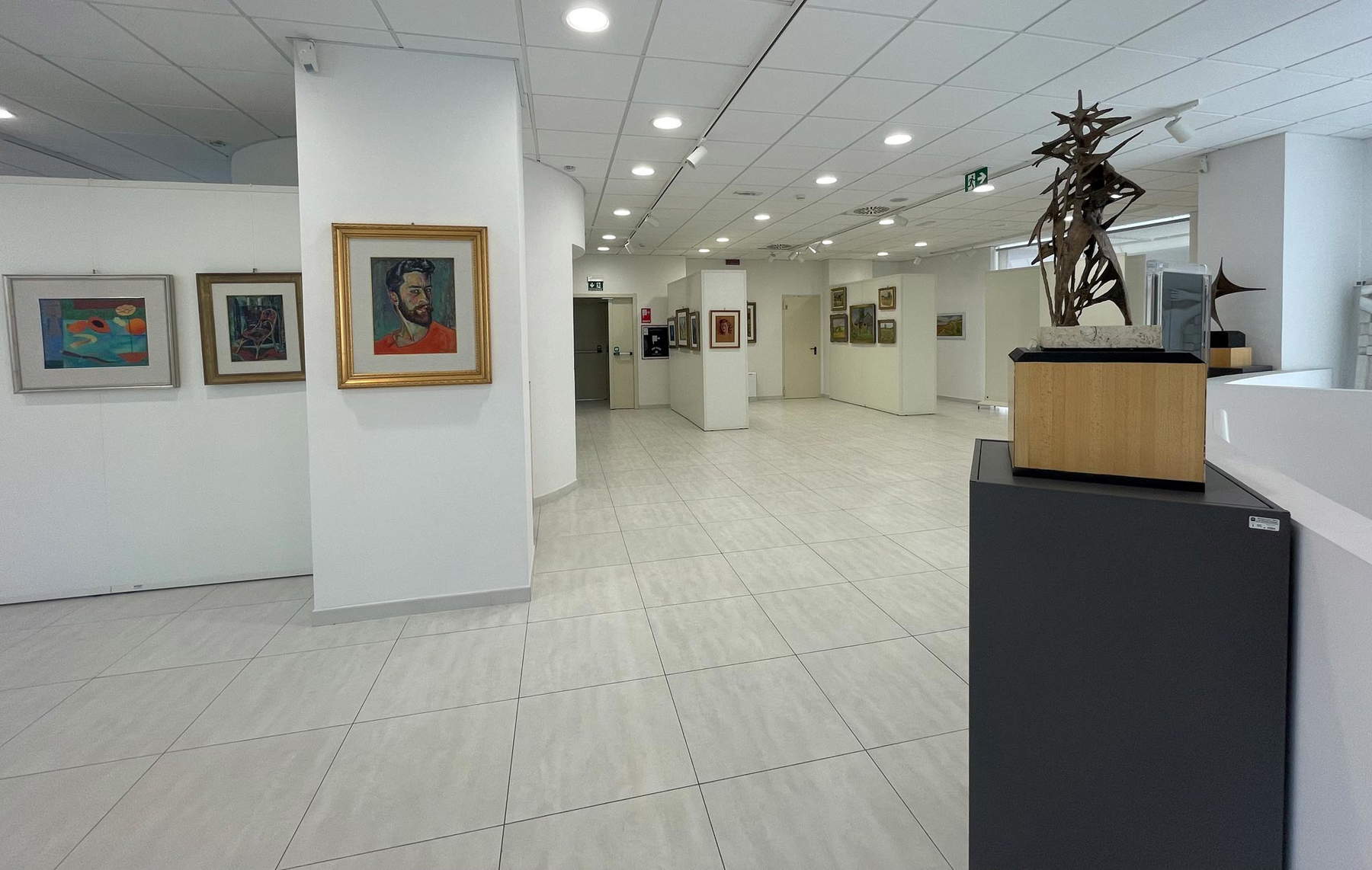
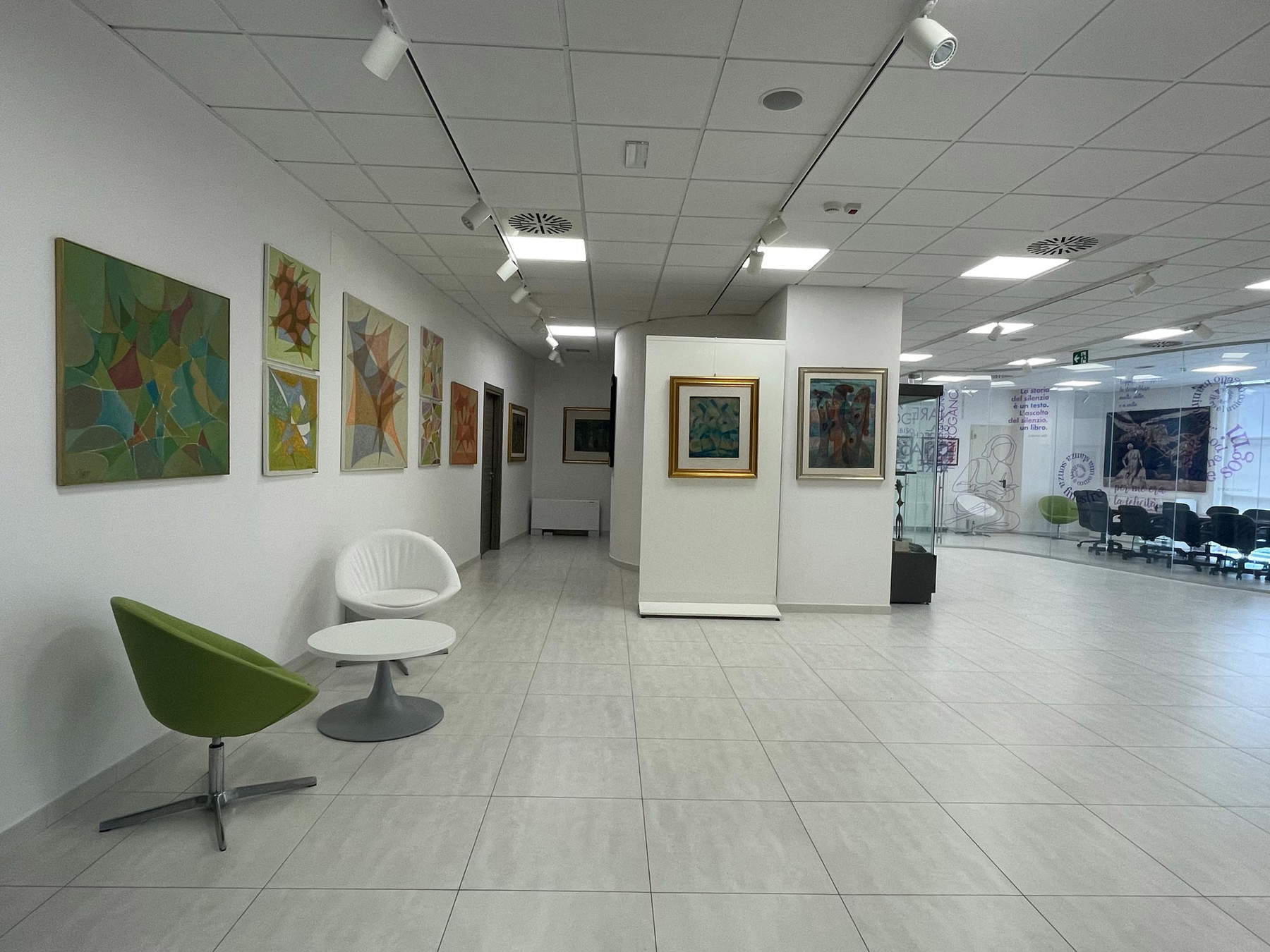
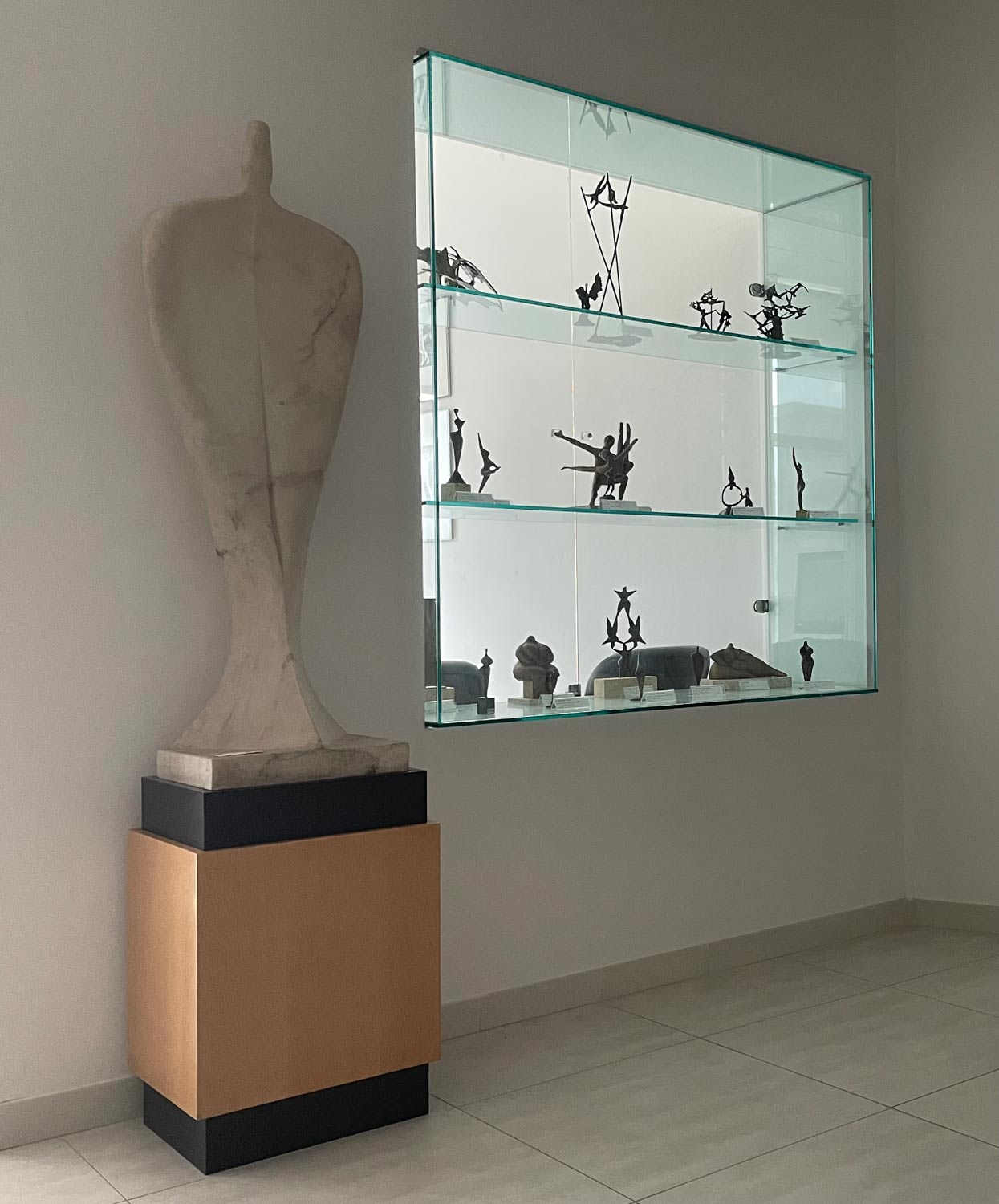

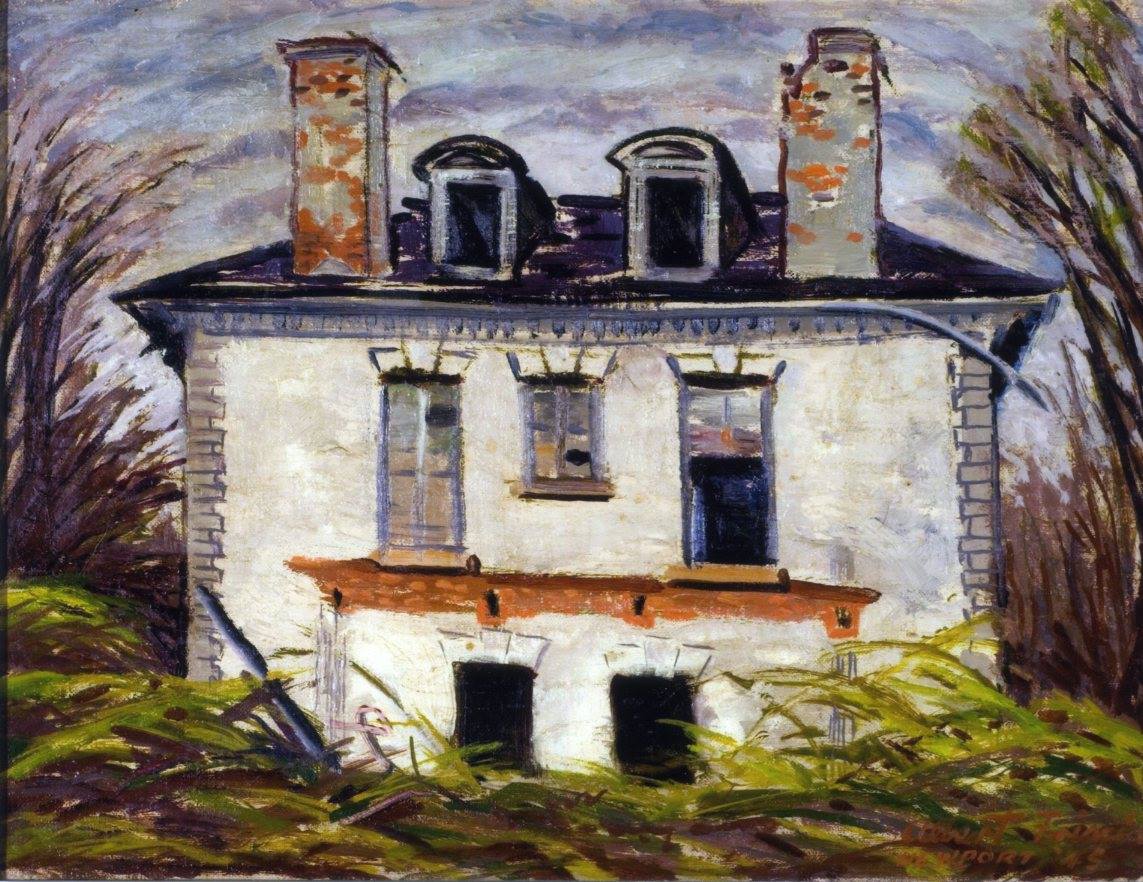 Albert Friscia
Albert Friscia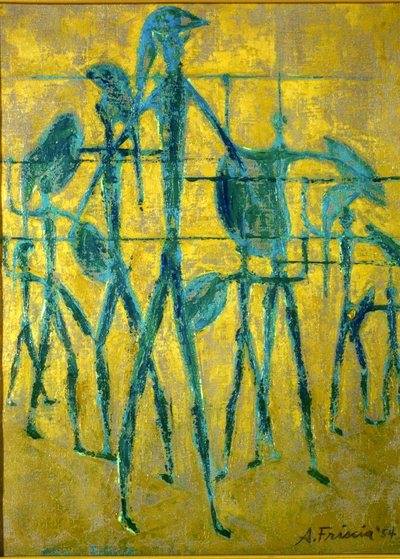 Albert Friscia
Albert FrisciaHis research would later be enriched by the input that came from studying different experiences: that of the Cubists, for example (which, however, interested him little), or Mexican muralism (which he had the opportunity to study with a stay in Mexico in 1948), the works on color projections made by Thomas Wilfred in the 1930s. His art is animated by a desire to find, Mantura further states, “an adaptation of the figurative to the linguistic demands of avant-garde experimentation, while keeping away from adopting a totally abstract language.” In the 1950s, Friscia continued to produce his still essentially figurative paintings, but in parallel he was conducting, in a more restrained manner, research on kinetic-luminous projections, which he showed privately to artists such as Afro, Alberto Burri, Angelo Savelli, and Roberto Matta). His machines, the Kinetichromes (i.e., luminous and sound paintings that make use of projections), which constitute perhaps the most original aspect of his research, would, however, be exhibited for the first time to the public only in 1967, on the occasion of the group show La Luce held at the Galleria L’Obelisco in Rome. And also dating back to the late 1960s are the first exhibitions of his sculptures, through which Friscia expresses his fascination with nature and science, and which refer to the sculpture of Hans Arp, Umberto Boccioni, and Henry Moore.
Friscia’s sculptures represent a very substantial portion of his production, although they are concentrated in the latter part of his career. Here, too, the language of the Italian-American artist lies somewhere between figuration and abstraction, as we see, for example, when looking at Venus, a soft and voluminous work that proposes a goddess with abundant forms, and which becomes a symbol of life itself and of motherhood (the theme of the “Great Mother” also returns in a unique work, the Planeometric Figure of the 1980s, the only work in the collection of the National Library of Potenza made by embossing, in order to make a voluptuous female body emerge from the bronze slab), or the Female Figure with which the artist, we read in the catalog entry referring to the work, arrives at “forms of great cleanliness in an attempt to make less hard and more transparent cubist densities; primary forms that derive from the extreme sterilization of more complex forms in the rendering of which, Albert Friscia’s sculpture is likened to that of Brancusi and Moore.” The great formal simplicity reminiscent of Brancusi can also be found in the Mystical Figure of the 1970s, in which the artist’s attempt to put forward a symbolic image of femininity is evident. Instead, it is movement that is the element that animates works such as the Dancing Figure or the Birds in Flight, which marks one of the high points of Friscia’s abstract language, with an interweaving of forms and planes that are distributed in a circle to suggest to the relative the idea of the movement of birds. Further expressive possibilities are explored with Planeometric form. geometric decorative motifs, a tiny work (it is just 6 centimeters high) from the 1950s that, the entry states, “depicts an abstract image with plastic articulations and geometric implosions: space, thus, seems to become matter in expansion,” a matter in motion that seems to anticipate the Kinetichromes.
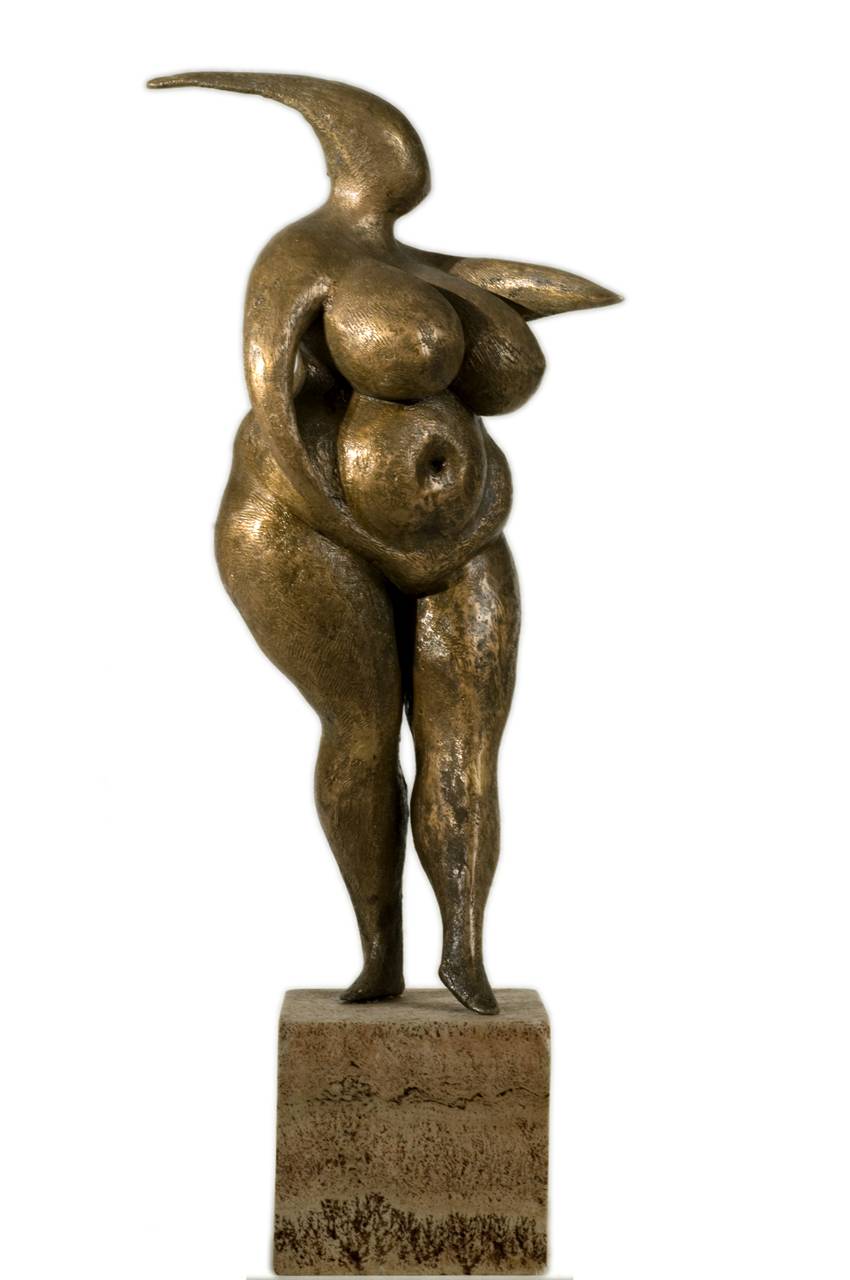

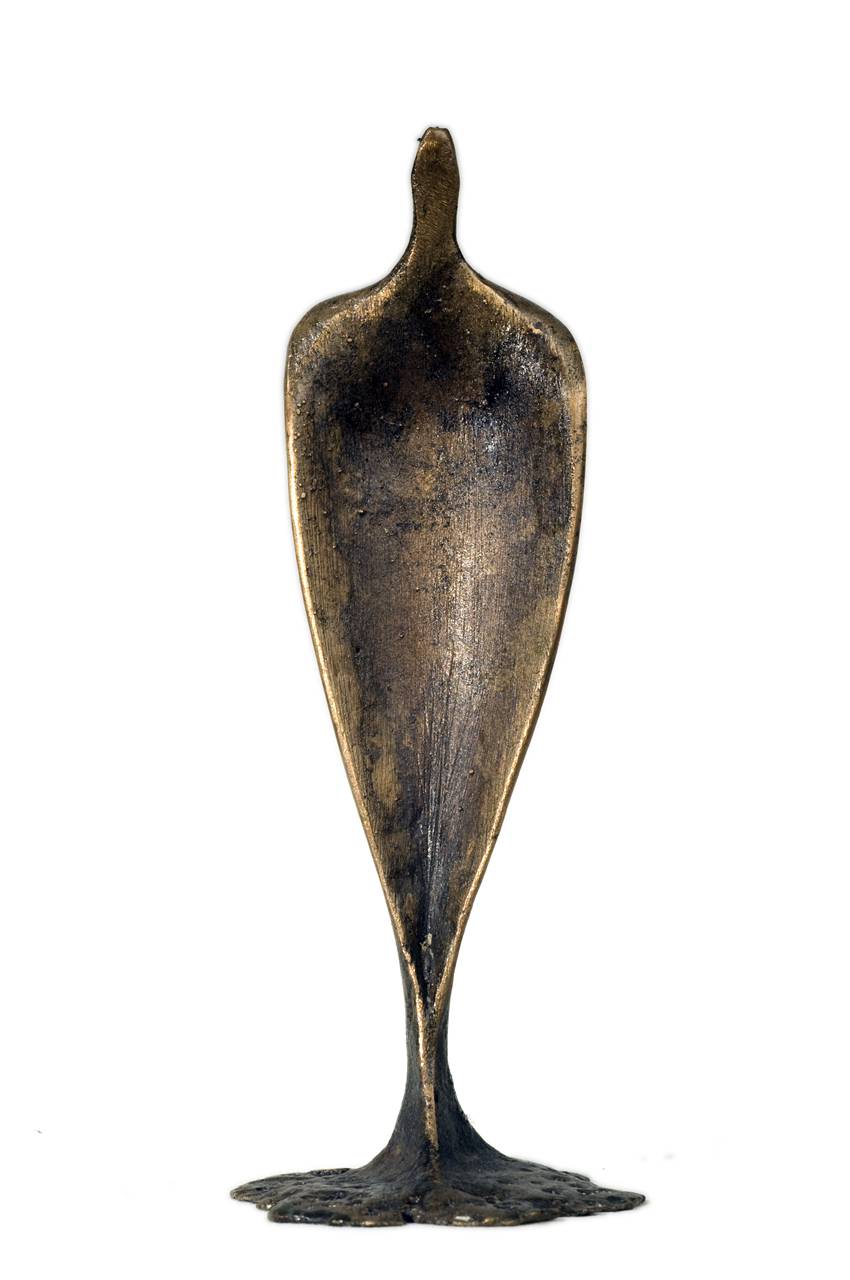

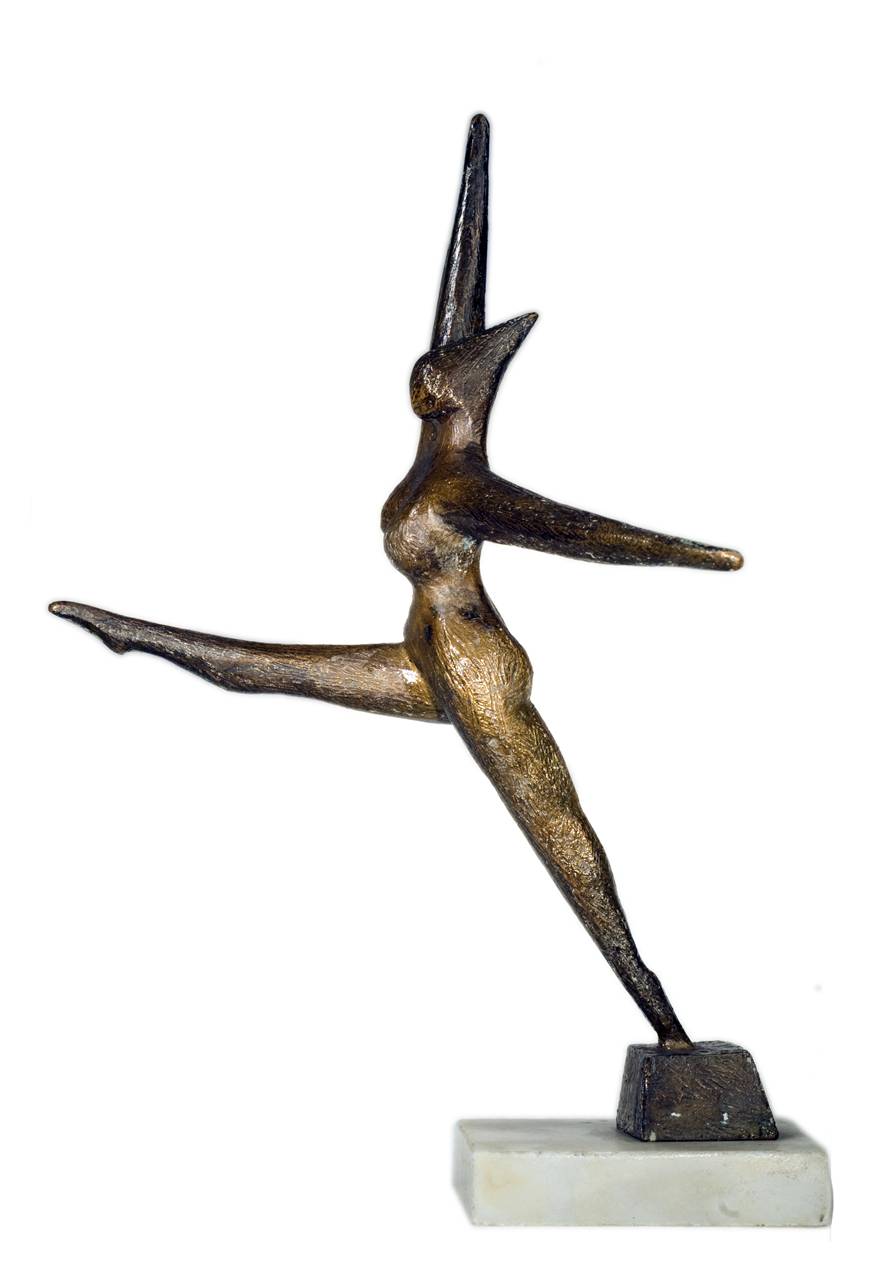


The latter, somewhere between art and mechanics, spring from experiments with the Polaroid camera, whose technical possibilities Friscia has been exploring since the postwar period. The Kinetichromes take the form of boxes containing two polarizers, which allow, through their rotation, to create large on the screen facing the observer luminous pictures in which “technical knowledge and imagination” intertwine, as Silvia Bordini has written, and at the relative to observe therefore “dilated geometries, made of light, curved harmoniously as if woven of an impalpable elastic matter, hybridized in the slow and continuous revelation of superimpositions, transparencies and opacities.” The images were those of forms in space in continuous transformation on the screen, through modulations of light and color. Albert Friscia, who thus stood in the wake of artists who had begun to use polarized light as a means of creating works of art, was an artist who could reconcile art and science, imagination and calculation, the freedom of the artist with the rigorous approach of the technician, the scientist.
“The kinetic work created by Friscia, explicated through chromokinetic projections,” wrote scholar Elisabetta Ronchini, “is centered on an enhancement of the image in which aesthetics is at the service of a visual spectacularization”: his forms “capture the eye and the mind, determining a total psychological involvement. The dynamic effects do not come to an abrupt halt are constant and calm: the transparent forms and colors vary slowly, in their superior balance. The resulting mood is serene, a sense of inner fulfillment takes over from the momentary annihilation of self.” What’s more, due to the fact that the rotation of the polarizers in the Kinetichromes allowed for the possibility of creating images that could change, Friscia was convinced that he had also added the dimension of time to the artwork.
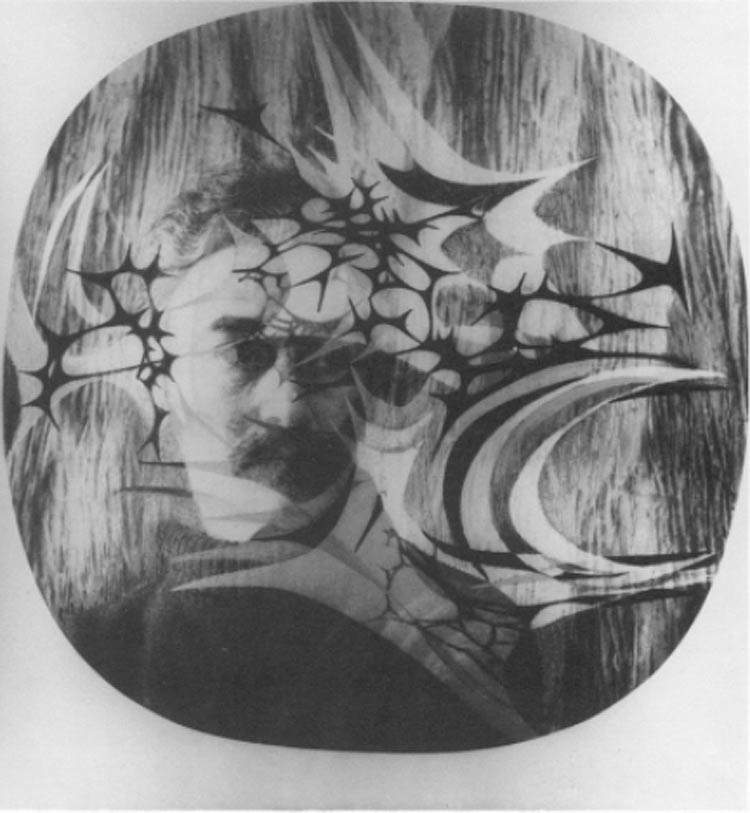
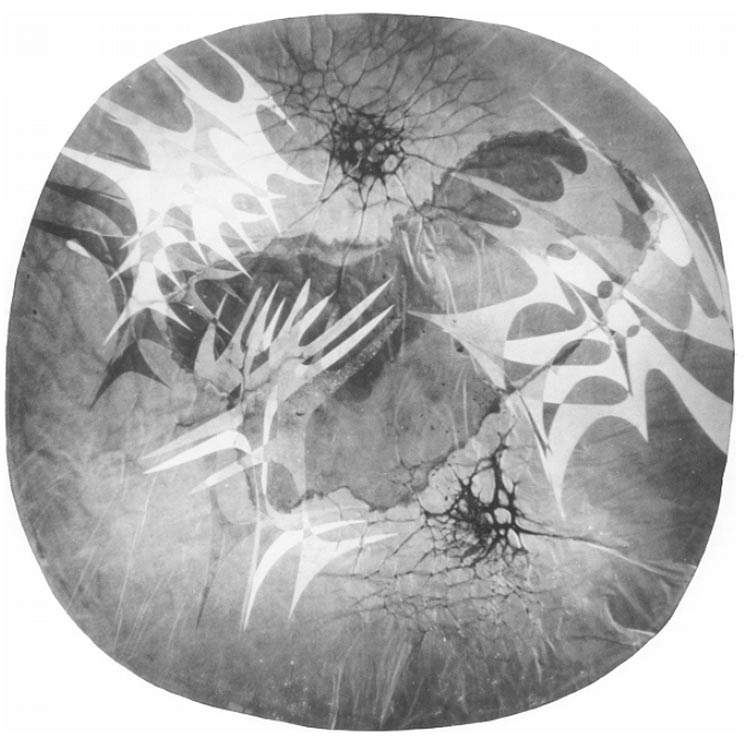
Having achieved success, the 1970s and 1980s are those of important public commissions: Friscia works for the cathedral in Potenza, for the basilica of Santa Maria in Montesanto in Rome, for the Ministry of Posts (for which he made the sculpture entitled Fluidity of Communication), for St. Peter’s Basilica in the Vatican, and for the Chicago Cathedral. Important critics write about him: in 1971, for example, a remarkable essay by Corrado Maltese comes out, which appreciates his kinetic-luminous work. Throughout the 1980s he continued to show his work in solo and group exhibitions, but continued his research, which ended, shortly before his passing, with a retrospective look, with a return to a melancholic figuration.
At his passing, a substantial number of his works remained stored in his home in Rome, located near the Trevi Fountain. From the beginning, his wife Lidia Di Bello’s idea was to donate the collection to the city of Potenza in order to open it to the public: the solution was identified in the National Library of Potenza as the most suitable venue for the purpose. It took some time before Lidia Di Bello’s dream came true: the formal act sanctioning the donation was in fact signed on February 10, 2000. Albert Friscia’s works reached Potenza in the following months and were immediately placed in the rooms of the Library on Gallitello Street, and on January 25, 2021, the permanent exhibition of the Italian-American artist’s works was thus inaugurated. “The wide corridors of the Library Institute,” wrote Franco Sabia, director of the National Library of Potenza between 2007 and 2016, “constituted the natural and functional place for the permanent exhibition naturally conjugating with the remarkable bibliographic heritage. Such an exhibition meant [...] offering the possibility for the regular users of the National Library (about 50,000 per year) to enjoy not only the library services, but also the enjoyment of a real picture gallery. And, at the same time, it offered the collection the opportunity to be appreciated by a large and attentive public, the vast majority of which are young people.” And for Potenza and all of Basilicata, it is also a chance to contribute to the knowledge and appreciation of an interesting artist to be rediscovered.
The National Library of Potenza
Established in 1974 as a detached section of the National Library of Naples, based on the transfer of the Bibliographic Fund named after the painter and bibliophile Giuseppe Viggiani, the National Library of Potenza was recognized as autonomous in 1984 and inaugurated in December 1985 in the building of the Regional Pontifical Seminary, before moving in 1985 to the Palazzo Giuzio building, which it occupied until 2019. However, the history of the Provincial Library of Potenza, the first public library in Lucania, dates back to the beginning of the 20th century: established by the Provincial Council of Basilicata in 1893, it was opened to the public in 1900 before being officially inaugurated the following year at the Provincial Palace. The transfer operations of the two libraries, which were completed in 2019, made it possible to bring together in a single location the heritage of the Provincial Library, which amounts to about 140,000 bibliographic units, and the heritage of the National Library, which amounts to about 300,000 bibliographic units. On Oct. 14, 2017, a Memorandum of Understanding was signed between the Ministry of Cultural Heritage and Activities and Tourism, the Basilicata Region, and the Province of Potenza, which decreed the birth of the territory’s integrated cultural hub, into which the Potenza Provincial Library also converged. The agreement is perhaps the first example in Italy of the functional integration of two library institutions--to which are added the Provincial Art Gallery’s exhibition spaces for contemporary art exhibitions--for the enhancement of the library’s heritage and the development of services to the public.
The Library’s new headquarters, known as the “White Tower,” is located within the old park of the former San Carlo Hospital in the Santa Maria district, not far from the Macchia Romana University Campus, the Provincial Archaeological Museum and the Provincial Art Gallery. The facility is spread over nine levels, two of which are below street level (where book deposits are located) and seven uncovered, connected by a panoramic elevator. The new integrated cultural hub makes available to the community not only a wide range of documentary resources (volumes, periodicals, incunabula, cinquecentine, manuscripts, maps, photographs, children’s and young people’s books, graphic novels, audiovisuals, board games and digital resources, including 240,000 images of books, periodicals and valuable volumes) but also Albert Friscia’s prestigious collection of artworks.
The National Library of Potenza also houses a large reading room, a space reserved for children in the 0-6 age group, a 119-seat conference room, thenewspaper library, a meeting room, a space for the enjoyment of audiovisual resources and gaming, the very rich Lucanian section, the room named after Giuseppe Viggiani, a floor designated for cafeteria service, surrounded by a large terrace, a digitization and multimedia production laboratory and a Fab-Lab located on the top floor, from which there is a splendid view of the city and the surrounding hills. The Fab-Lab, open to local students and creatives and christened The Ideas Factory, aims to promote a culture of innovation and collaboration through a series of initiatives related to coding, educational robotics, creative learning and media literacy that enrich the Library’s range of educational services.
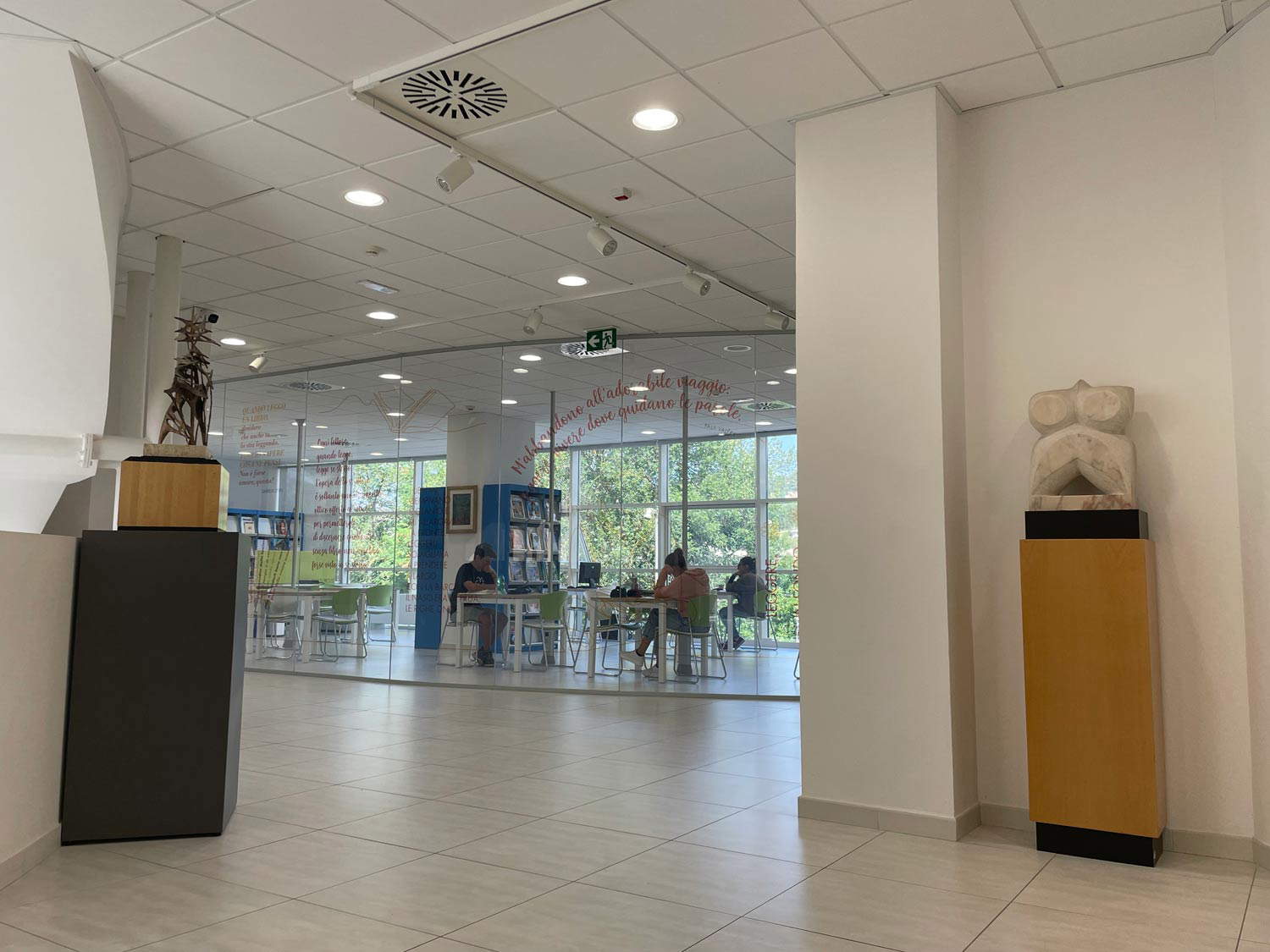
Warning: the translation into English of the original Italian article was created using automatic tools. We undertake to review all articles, but we do not guarantee the total absence of inaccuracies in the translation due to the program. You can find the original by clicking on the ITA button. If you find any mistake,please contact us.





























